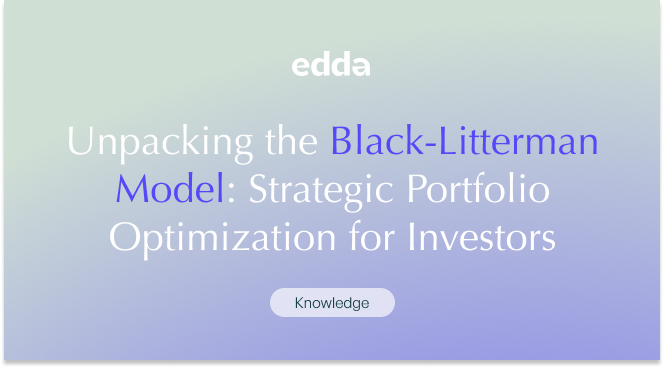The practice of integrating Fintech venture capital software across the entire investment lifecycle propels investors towards more efficient, accurate, and dynamic practices. From family offices to venture capital (VC) and private equity firms, this approach makes the complex task of managing investments from inception to fruition a breeze.
In this article, we’ll explore how fintech solutions are redefining full-cycle investment management. We will explore the integration of these technologies at each stage of the investment process, from initial market analysis and deal sourcing to due diligence, portfolio management, and eventually, exit strategies.
Discover how venture capital software addresses the unique challenges faced by diverse investment entities, fostering stronger relationships, enhancing operational efficiency, and ultimately, driving superior investment outcomes.
Evolution of Fintech
Fintech’s journey from simple digitization of financial transactions to the sophisticated ecosystem it is today has been marked by rapid advancements in technology.
The advent of the internet, followed by breakthroughs in data analytics, blockchain, artificial intelligence (AI), and machine learning (ML), has catapulted fintech into a key driver of innovation in financial services. This evolution has expanded the capabilities of investment firms and enabled them to be more agile.
Fintech has democratized access to financial services, broadening the reach to include previously underserved or unbanked populations. For investment management firms, the implications are profound, offering enhanced capabilities for risk assessment, portfolio management, and operational efficiency.
The agility and innovative solutions provided by fintech have intensified competition within the sector, compelling traditional institutions to also embrace new technologies.
Solutions Revolutionizing Investment Management
Data Analytics and AI: Central to modern fintech, these technologies empower firms to analyze vast datasets, yielding insights that inform decision-making and market predictions.
Blockchain: Beyond its association with cryptocurrencies, blockchain technology offers unparalleled benefits in security, transparency, and efficiency, crucial for tasks such as due diligence and compliance.
Robotic Process Automation (RPA): By automating routine tasks, RPA frees investment professionals to concentrate on strategic decision-making and value-added activities.
Cloud Computing: The scalability, flexibility, and cost-effectiveness of cloud solutions support the expanding data requirements and complex analytics needs of investment firms.
RegTech: Focusing on regulatory compliance, RegTech provides technologies that simplify adherence to the ever-evolving regulatory landscape in finance.
Pre-Investment Phase
The initial stages of investment management, known as the pre-investment phase, lay the foundation for successful investment outcomes. Each stage in the pre-investment phase benefits heavily from advanced VC fintech capabilities.
Market Analysis & Strategy Formulation
When conducting market analysis, fintech tools offer unparalleled capabilities for sifting through vast amounts of data to extract meaningful insights. AI and machine learning algorithms can identify patterns and trends that might elude human analysis, providing a sound foundation for strategy development.
These insights help investment firms steer their approaches to current market conditions, optimizing their investment strategies for better alignment with long-term goals.
Due Diligence & Selection
The due diligence process is critical in assessing the viability and risk of potential investments. Fintech solutions streamline this process, offering platforms that automate the collection and analysis of financial documents, legal papers, and other pertinent data.
Blockchain technology enhances the transparency and security of this process, providing a tamper-proof ledger of transactions and documentation. This level of automation and security helps accelerate due diligence while ensuring a higher degree of accuracy and reliability in the selection process.
Investment Execution Phase
Once a strategic foundation is laid during the pre-investment phase, the focus shifts to executing the investment strategy effectively. This phase is characterized by portfolio construction and diversification, followed by the actual execution of trades and investments. Fintech plays a critical role in optimizing these processes, ensuring precision and efficiency.
Portfolio Construction & Diversification
Constructing a well-diversified portfolio is the key to managing risk and achieving desired investment outcomes. Fintech platforms, utilizing advanced algorithms and AI, assist in this process by analyzing historical data, market trends, and correlation coefficients between different asset classes.
This analysis enables the creation of portfolios that are not only diversified but also aligned with the investor’s risk tolerance and return objectives. Furthermore, automated rebalancing tools ensure that portfolios remain optimized over time, adjusting to market changes and maintaining the intended asset allocation.
Execution & Trade Optimization
The execution of trades is another area where fintech solutions offer significant advantages. Algorithmic trading systems can execute trades at optimal prices and times, leveraging real-time market data and sophisticated algorithms to capitalize on market inefficiencies. These systems can also manage large volumes of trades with high precision and minimal impact on market prices, an essential factor for investment firms handling substantial assets.
Moreover, fintech solutions provide platforms for seamless communication and coordination among different stakeholders involved in the investment process. This ensures that strategies are executed cohesively across various departments and external partners, minimizing errors and enhancing overall efficiency.
Through the integration of these fintech solutions, the pre-investment phase becomes more efficient, data-driven, and secure, setting a solid foundation for subsequent investment decisions and actions.
By harnessing fintech solutions in the investment execution phase, firms can achieve greater accuracy in trade execution, maintain optimal portfolio compositions, and execute their investment strategies with heightened efficiency and coherence.
Post-Investment Management
After the execution of investments, the focus shifts to the ongoing management and monitoring of the portfolio. This stage is crucial for ensuring that the investments continue to align with the firm’s strategic objectives and for making necessary adjustments in response to market developments or changes in investment outlook. Fintech solutions play a pivotal role in enhancing the efficiency and effectiveness of post-investment management through continuous monitoring, rebalancing, risk management, and compliance.
Ongoing Monitoring and Rebalancing
Continuous oversight of the investment portfolio is essential to detect significant deviations from target allocations or to identify underperforming assets. Fintech platforms equipped with real-time analytics and reporting tools enable investment managers to monitor portfolio performance against benchmarks and make informed decisions. Automated rebalancing tools can then adjust the portfolio to maintain alignment with the original investment strategy, taking into account changes in market conditions and asset valuations.
Risk Management and Compliance
Managing investment risk and ensuring compliance with regulatory requirements are ongoing concerns for investment firms. Fintech solutions offer sophisticated risk assessment models that analyze market volatility, credit risk, and other factors to provide a comprehensive view of portfolio risk. These tools can simulate various market scenarios to test portfolio resilience and help in devising risk mitigation strategies.
In addition, RegTech solutions facilitate compliance with an ever-changing regulatory landscape. These technologies streamline reporting requirements, monitor compliance in real-time, and provide alerts for potential regulatory breaches, thereby reducing the risk of non-compliance penalties.
By leveraging fintech for post-investment management, firms can maintain a proactive stance in portfolio management, adapt swiftly to market changes, manage risks effectively, and ensure strict compliance with regulatory standards, all of which are critical for sustaining long-term investment success.
Enhancing Investor Relations and Reporting
Clear, transparent communication and comprehensive reporting are cornerstones of effective investor relations. In this era of rapid information exchange, investment firms must provide stakeholders with timely, accurate, and detailed insights into portfolio performance and strategic decisions. Fintech solutions significantly contribute to achieving these goals by streamlining reporting processes and enhancing the quality of communication between investment managers and their clients or investors.
Transparency and Communication
Fintech platforms offer advanced Customer Relationship Management (CRM) tools tailored for the investment industry, enabling firms to maintain detailed records of investor interactions, preferences, and concerns. These platforms facilitate direct, secure, and efficient communication channels, allowing for the seamless exchange of information and updates. Moreover, integrated communication tools can automate regular updates and reports, ensuring that investors stay informed about the latest developments, market insights, and the performance of their investments.
Performance Analysis and Feedback
Investment firms rely on accurate performance metrics to evaluate the success of their strategies and make informed decisions. Fintech solutions provide a suite of analytical tools that deliver real-time performance data, risk assessments, and predictive analytics. These tools enable investment managers to generate comprehensive reports that not only highlight past performance but also offer insights into future opportunities and challenges.
Furthermore, feedback mechanisms built into fintech platforms allow investors to share their responses and concerns, facilitating an ongoing dialogue that can inform strategy adjustments and foster stronger relationships.
By leveraging fintech for investor relations and reporting, investment firms can uphold a high standard of transparency and engagement, ensuring that investors are well-informed and confident in the management of their assets. This, in turn, strengthens trust and loyalty, which are critical components of long-term success in the competitive landscape of investment management.
Challenges & Considerations
While the integration of fintech solutions across Full Cycle Investment Management offers significant benefits, it also presents a set of challenges and considerations that investment firms must navigate. Addressing these challenges effectively is crucial to fully leveraging the potential of fintech and ensuring a smooth transition to more technology-driven processes.
Addressing Technical & Integration Challenges
The adoption of fintech solutions often involves integrating new technologies with existing systems, which can be complex and resource-intensive. Investment firms must carefully evaluate the compatibility of fintech solutions with their current infrastructure to avoid disruptions. Additionally, the technical complexity of some fintech applications may require specialized skills, necessitating training for staff or the hiring of new talent with the requisite expertise.
Data Security & Privacy Concerns
As fintech solutions involve handling sensitive financial data, investment firms must prioritize data security and privacy. This includes ensuring compliance with data protection regulations, such as GDPR, and implementing robust cybersecurity measures to safeguard against data breaches and cyber threats. Regular security audits and updates are essential to maintaining the integrity and confidentiality of investor data.
Regulatory Compliance & Ethical Considerations
The rapidly evolving regulatory landscape in the financial sector presents another challenge for investment firms integrating fintech solutions. Staying abreast of new regulations and ensuring compliance is critical to avoid legal and financial penalties. Moreover, firms must consider ethical implications, particularly when using AI and data analytics, to prevent bias in decision-making processes and maintain fair practices.
By proactively addressing these challenges and considerations, investment firms can mitigate risks associated with fintech integration and capitalize on the opportunities it presents for enhancing Full Cycle Investment Management. This requires a strategic approach, combining careful planning, continuous learning, and adherence to best practices in technology adoption and risk management.
Future Outlook
As we gaze into the horizon of investment management, the symbiotic relationship between fintech and this sector is poised to deepen, heralding a future where technology-driven solutions become even more entrenched in every facet of the investment cycle. This future landscape is likely to be characterized by further innovations, the emergence of new fintech players, and an ongoing evolution in how investment firms operate and engage with their clients.
Emerging Trends in Fintech & Investment Management
The relentless pace of technological advancement promises the emergence of new fintech solutions that will continue to reshape the investment management landscape. We can anticipate advancements in areas such as quantum computing, which could revolutionize data analysis and financial modeling, and further developments in blockchain technology, potentially redefining transaction security and transparency. Moreover, the integration of artificial intelligence in investment strategies is expected to become more sophisticated, enabling even more nuanced and predictive market analyses.
The Path Forward for Investment Firms
Investment firms, in response to these evolving trends, will need to remain agile, continuously adapting their strategies and operations to harness the full potential of emerging fintech innovations. This may involve investing in ongoing education and training for their teams, fostering a culture of innovation, and remaining vigilant to the ethical and regulatory implications of new technologies.
Moreover, the focus on client-centric solutions will intensify, with firms leveraging technology to offer more personalized, responsive, and transparent services. The ability to effectively integrate new fintech solutions while maintaining a strong client relationship will be a key differentiator in the competitive investment management market.
Leveraging Edda’s Software in Full Cycle Investment Management
Edda’s venture capital portfolio management software emerges as a formidable ally for investment firms navigating the complexities of Full Cycle Investment Management. By offering a holistic platform that integrates various facets of the investment process, from deal sourcing to portfolio management and investor relations, Edda’s solutions epitomize the seamless fusion of fintech innovation with investment management needs.
Streamlining Dealflow and Due Diligence
Edda’s platform excels in optimizing the initial stages of the investment cycle, providing robust tools for dealflow management and due diligence. The software’s ability to aggregate and analyze vast amounts of data facilitates efficient market analysis, helping firms identify viable investment opportunities swiftly. Moreover, its due diligence functionalities leverage advanced data analytics to streamline the vetting process, ensuring thorough and accurate evaluation of potential investments.
Enhancing Portfolio Management and Monitoring
At the heart of Edda’s offering is its sophisticated portfolio management system, designed to provide real-time insights into investment performance. This system enables firms to monitor their portfolios continuously, applying predictive analytics to foresee market trends and adjust strategies proactively. The automated rebalancing feature ensures portfolios remain aligned with strategic objectives, adapting to market shifts and optimizing asset allocation.
Fostering Investor Relations and Transparency
Edda recognizes the importance of robust investor relations, offering a venture capital CRM and communication tools that enhance transparency and foster trust. The platform facilitates regular, detailed reporting on investment performance, market insights, and strategic decisions, ensuring investors are well-informed and engaged. Additionally, Edda’s investor portal provides a secure, accessible platform for investors to view their investment data, receive updates, and communicate with management, reinforcing the partnership between investors and firms.
Navigating Challenges with Edda
Edda’s software suite is designed with an understanding of the challenges inherent in integrating fintech solutions into investment management. The platform’s intuitive design and compatibility with existing systems address technical and integration challenges, while its commitment to data security and regulatory compliance ensures that firms can leverage fintech’s benefits without compromising on critical operational safeguards.
Conclusion
Edda’s software suite stands as a testament to the transformative potential of fintech in Full Cycle Investment Management. By offering a comprehensive, integrated solution that addresses the nuances of the investment process, Edda empowers investment firms to navigate the complexities of the modern financial landscape with confidence, efficiency, and a client-centric approach.








